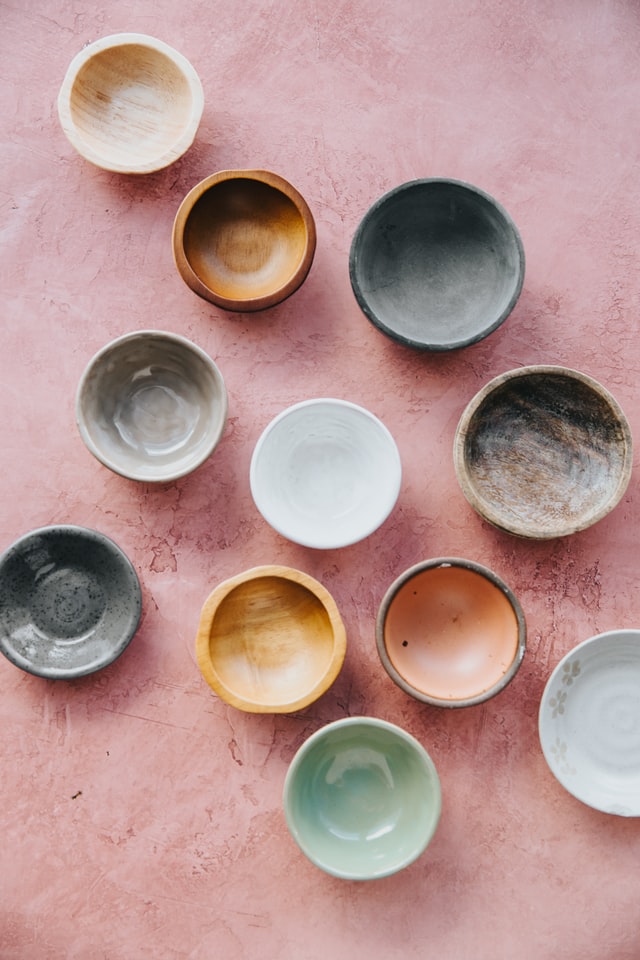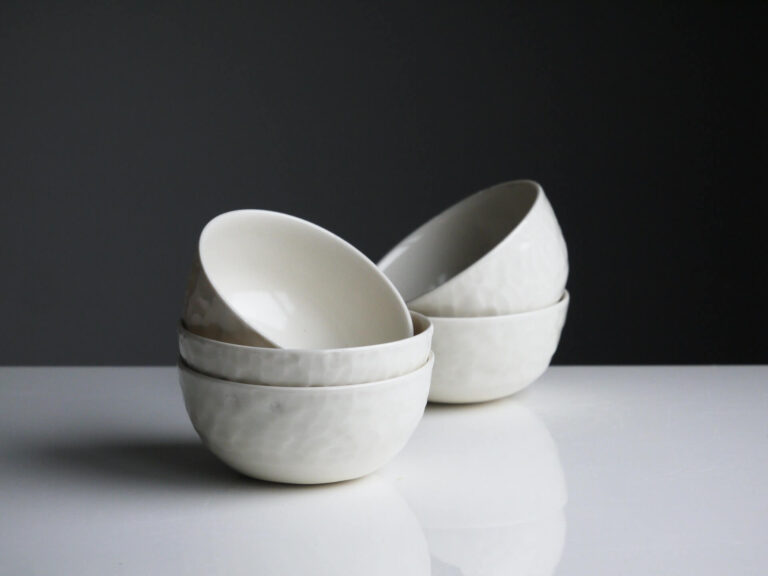Air Dry Clay For Pottery: Everything You Should Know
One of the biggest hurdles to starting pottery at home is the big initial investment. Buying both a pottery wheel and a firing kiln can really add up.
Fortunately you can skip out on a kiln if you are using air dry clay.
Let’s go into more detail about air dry clay and everything you need to know.
What is air dry clay?
Air dry clay is a type of clay that hardens and cures at room temperature, which removes the need for a kiln or firing service. This makes air dry clay a good option for beginners. Once dried, it can be painted or decorated like regular clay.

Is air dry clay good for beginners?
Since air dry clay is cheap and doesn’t require a kiln for firing, it is a popular choice among beginners. However, working with air dry clay also bring a few unique challenges. For example, air dry clay is way more sticky than regular clay.
Also, you have to make sure that you don’t make anything too thick (because it will take very long to dry) or too thin (because it might break off). Using a rolling pin can help a lot to ensure the same thickness throughout.
Best air dry clays
There are a lot of different air dry clays to choose from. And not only quality, but also personal preference can have a big influence on which one is your favorite.
That’s why it’s best to buy only small amounts of clay at a time initially, until you find the one you like the best.
Here are three options that we like to use ourselves:
1. DAS air hardening clay
- Easy to mold and create
- Dries in 24 hours
- Can be painted with tempera or acrylic paint
- White or Terra Cotta colors
2. Crayola air dry clay
3. Activa Plus natural self hardening clay
- Easy to form by hand or with tools
- Dries with minimal shrinkage within 24 hours
- Can be carved, sanded or drilled when dry
- Can be kiln dried but not necessary
- White, black and Terra Cotta colors
Everything you need to know!
If this is your first time working with air dry clay, you probably have a lot of questions.
That’s why we have answered the most common questions related to air dry clay below.
Can I use air dry clay for pottery?
Air dry clay can be used for pottery, and it’s especially well suited for slab pottery. However, since air dry clay isn’t food safe, any cups or plates you make will be only decorative. Moreover, if you want to place your pieces outside, you’ll have to seal them with a layer of resin or varnish to make them water-resistant.
Is air dry clay good for using on a pottery wheel?
Air dry clay can be used on a pottery wheel, but depending on the brand and type of the clay, it can be quite a hit or miss situation. Air dry clay requires more water than regular ceramic clay and might collapse more easily when you remove it from the wheel.
So if you haven’t bought any clay yet, I would recommend you to buy several air dry clays and see which one works best for you.
What are the pros and cons of air dry clay?
Here is a quick summary of the pros and cons of using air dry clay compared to regular clay that you should consider before buying:
| Pros | Cons |
|---|---|
| Cheap | Not as durable as regular clay |
| Doesn’t require a kiln | Needs sealing to make water resistant |
| Good for mixed media | Small pieces easily break |
| Can be used for crafts besides pottery | Long drying process |
| Good for handbuilding | Prone to cracking |
How long does air dry clay take to dry?
The air dry clay will start to dry as soon as you remove it from its package and expose it to the air. However, for the clay to fully dry at room temperature it will take roughly 24 to 72 hours. You can’t speed up this process by heating the clay, since air dry clay easily cracks at elevated temperatures.
The drying time depends on the clay you are using and your design. Thick pieces of clay will take longer to dry than thin ones. Rotating your piece can also prevent moisture from being trapped at the bottom and speed up the drying process.
Is air dry clay durable or can it break easily?
Air dry clay is not as strong as clay that has been heated at high temperatures. As a result, thin or small pieces can easily break. However, as long as you don’t make your clay too thin, it should still be quite durable for most medium-sized projects.
Note that the types and brand of air dry clay you use also has a big impact on how strong the finished product will be.
Can air dry clay get wet?
Air dry clay should not be exposed to water or other liquids, even after it has fully dried. Since the dried clay is very porous, it will quickly absorb any liquid it gets in contact with and might even become soft again.
You can make your clay water-resistant once it has fully dried by applying a layer of acrylic paint or varnish. If you want your clay to be completely waterproof, you can apply a layer of liquid epoxy resin.
Is air dry clay safe for food?
Any object made out of air dry clay is not food safe and should only be used for decorative purposes only. Although air dry clay doesn’t contain highly toxic compounds, it can be very porous even after drying. This means it easily absorbs liquids or food residue.
If you want to make functional dishes, cups, or plates you will have to use regular clay and fire it at adequate temperatures.
Why does my air dry clay keep cracking?
When the clay is drying, the moisture inside the clay is slowly evaporating. If this evaporation occurs too fast or unevenly, cracks will start to show throughout your clay. So cracks are more likely to form during summer or in warm climates.
How do you stop air dry clay from cracking?
To prevent air dry clay from cracking, you should expose all sides to air to ensure water can evaporate evenly. You can easily achieve this by placing your pieces on a cookie screen or by occasionally turn over your pieces. Making pieces with even thickness will also help to stop cracking.
If the clay still cracks, you try placing some plastic or a slightly damp cloth on top of the clay. This will slow down the drying process.
How do you fix cracks in air dry clay?
Although it’s best to avoid cracks all together, a small crack or two doesn’t need to spell disaster.
To fix any cracks that might form in your air dry clay, you can mix some fresh clay with water to form a paste and apply it on the cracked area. Use your fingers to smoothen the area and let the clay dry again in a cool area.



